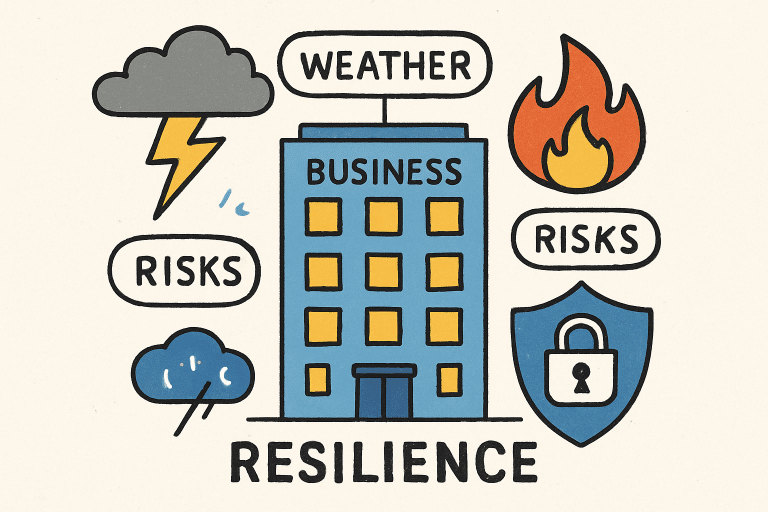Why Energy Resilience Is Becoming a Top Priority for Businesses
Key Takeaways
- Energy resilience ensures continuous business operations amid energy disruptions, safeguarding profitability and reputation.
- Rising energy demand, volatile costs, extreme weather, and cyber threats drive businesses to prioritize energy resilience strategies.
- Implementing on-site generation, efficiency measures, and data-driven monitoring are pivotal actions for building resilience.
- Regulatory and sustainability pressures make resilience a critical component of long-term business planning.
Understanding Energy Resilience
Energy resilience represents a business’s capability to maintain uninterrupted operations despite challenges to energy supply, such as natural disasters, grid failures, or targeted cyberattacks. Ensuring this resilience involves a combination of stable energy sourcing, contingency plans, and technologies designed to keep critical systems online regardless of external circumstances. In mission-critical industries like healthcare, education, and manufacturing, such preparation is essential to avoid safety risks and substantial financial losses. Companies dedicated to energy resilience are not only protecting their own assets but also solidifying trust among customers, partners, and broader communities.
With increasing industry awareness, more business leaders recognize that energy resilience isn’t just backup generators or temporary solutions. As highlighted on Bloom Energy LinkedIn, organizations are increasingly exploring advanced, sustainable technologies that redefine how energy reliability is achieved. It’s an integrated, strategic approach that supports long-term operational continuity, regulatory compliance, and sustainability objectives.
Rising Energy Demand and Its Implications
Across the globe, organizations are encountering unprecedented increases in energy usage driven by electrification, digital transformation, and expanded operations. An EY research report notes that over 70% of businesses are intensifying focus on electrification, emissions management, and energy costs over the next three years. Furthermore, 66% express concerns about securing consistent, reliable energy necessary for scaling, while nearly two-thirds cite rising and fluctuating energy expenses as a direct threat to profitability and competitiveness. Such realities underscore the urgent need for businesses to build resilience into every layer of their energy framework.
As demand rises, delicately balanced supply chains are encountering pressure, exposing vulnerabilities that might not have existed previously. Companies must anticipate price swings and availability issues, responding proactively with energy management and diversification strategies that ensure a steady power supply and fiscal health.
Impact of Extreme Weather Events
More frequent and severe extreme weather, such as hurricanes, wildfires, and floods, escalates energy infrastructure risks. According to the U.S. Department of Energy, blackouts and power interruptions driven by weather-related events now result in an estimated $150 billion annual losses for U.S. businesses alone. These disruptions don’t simply affect the cost of operations but can also endanger employee and customer safety and brand reputation.
The cost and occurrence of weather-induced outages highlight the necessity for robust energy resilience. Companies must assess their vulnerability to natural disasters and develop comprehensive mitigation plans, including diversified power sourcing, site fortification, and rapid response protocols.
Cybersecurity Threats to Energy Infrastructure
Businesses face mounting cyber risks, particularly in the energy sector, as infrastructure becomes more digitized and interconnected. The International Energy Agency (IEA) reports that cyberattacks targeting critical energy systems doubled between 2020 and 2022, ranging from ransomware incidents to direct attacks on grid operations. The fallout of such breaches extends from operational disruption to data loss and irreparable damage to corporate reputation.
Defending against these threats demands an investment in advanced cybersecurity protocols, comprehensive employee training, and real-time system monitoring. By integrating robust digital safeguards, companies can dramatically reduce the likelihood and severity of cyber incidents.
Strategies for Enhancing Energy Resilience
Adopting a proactive, multi-layered strategy is essential for resilience. Key actions include:
- On-Site Energy Generation: Deploying microgrids, solar panels, and battery storage systems enables businesses to produce and store their power, reducing reliance on the main grid during outages or peak periods.
- Energy Efficiency Measures: Regular energy audits and optimization steps—such as upgrading equipment, automating controls, and retrofitting buildings—trim overall energy usage, lower exposure to cost volatility, and improve sustainability.
- Collaborative Partnerships: Teaming with energy providers and technology partners allows for tailored solutions that align with specific operational goals and unique risk factors.
Data-Driven Decision Making
Leveraging real-time data, analytics, and smart metering technologies empowers businesses to continuously monitor consumption, detect inefficiencies, and foresee potential problems. Proactive decision-making enables timely interventions that protect against disruptions and improve cost management. Additionally, smart energy management systems can facilitate automatic load shifting or demand response, which is critical for resilience and sustainability.
Regulatory Compliance and Sustainability Goals
Regulatory agencies and governments are intensifying expectations for energy resilience and environmental performance. Whether through mandated resilience standards, carbon reduction targets, or incentives for clean energy, leaders must stay ahead of evolving requirements. Businesses that invest in resilience reduce compliance risks, advance their long-term sustainability, enhance their reputation, and appeal to environmentally-conscious investors and customers.
Final Thoughts
As global industries confront swelling energy needs, unpredictable weather, and evolving cyber threats, energy resilience is a mission-critical priority. Forward-looking organizations are adopting holistic approaches—combining advanced technology, strategic partnerships, and rigorous planning—to safeguard continuous operations, support regulatory compliance, and strengthen sustainability. Leaders can ensure lasting competitiveness and operational confidence in an ever-changing world by making energy resilience a central pillar of business strategy.
